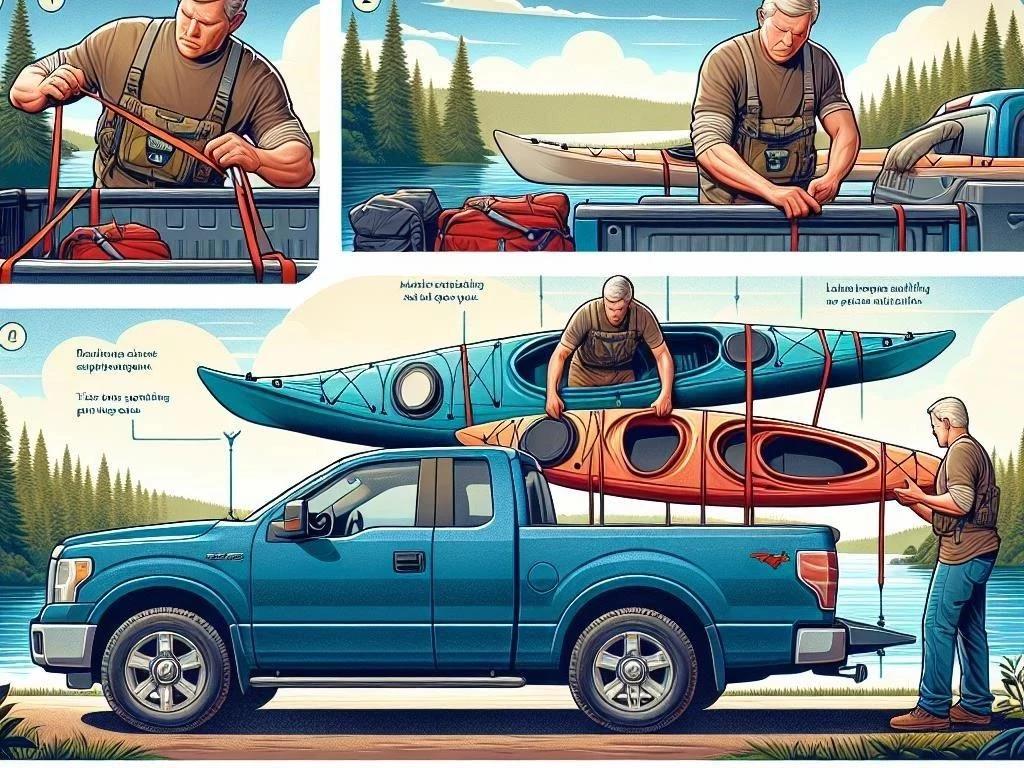
Transporting a kayak in a truck requires proper planning, equipment, and techniques to ensure safety, security, and ease during your outdoor adventures and trips.
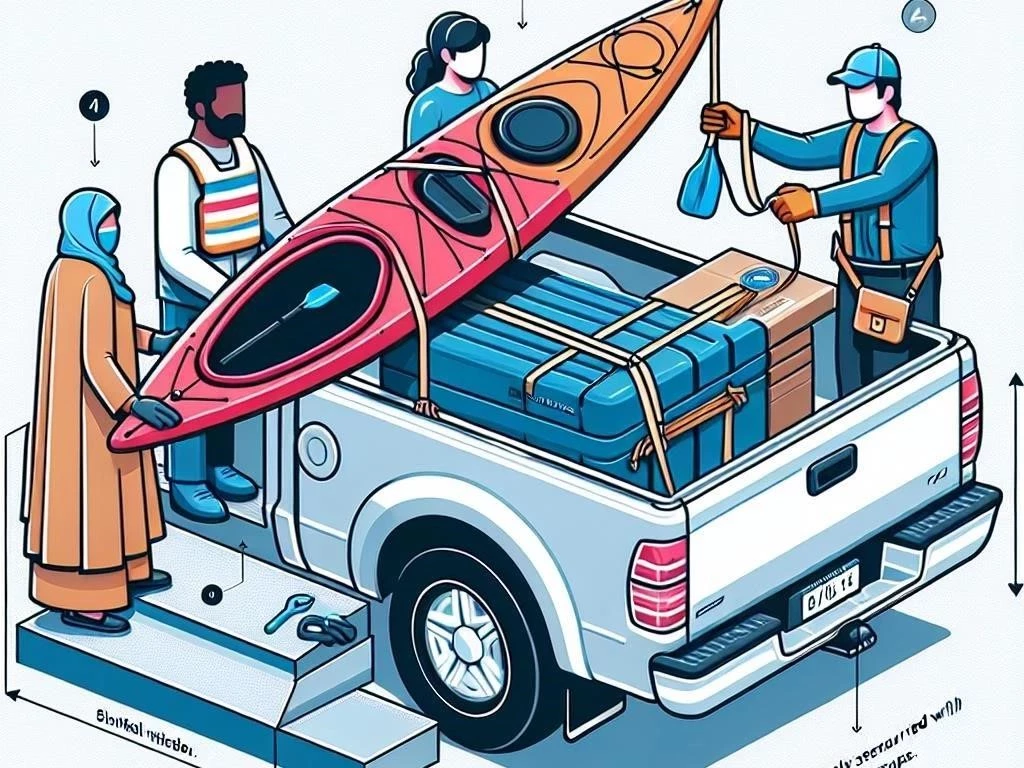
Transporting a kayak safely in a truck is essential for any kayaking enthusiast. Understanding the right techniques and equipment will ensure your outdoor gear remains secure during travel. Whether heading to the water for a fishing trip, a camping adventure, or just a day of water sports, proper kayak transportation can make the experience smoother. This section will cover essential factors, including truck setup, equipment needed, and best practices to follow. Knowing these basics helps prevent damage to your kayak and truck while ensuring a hassle-free journey to your destination.
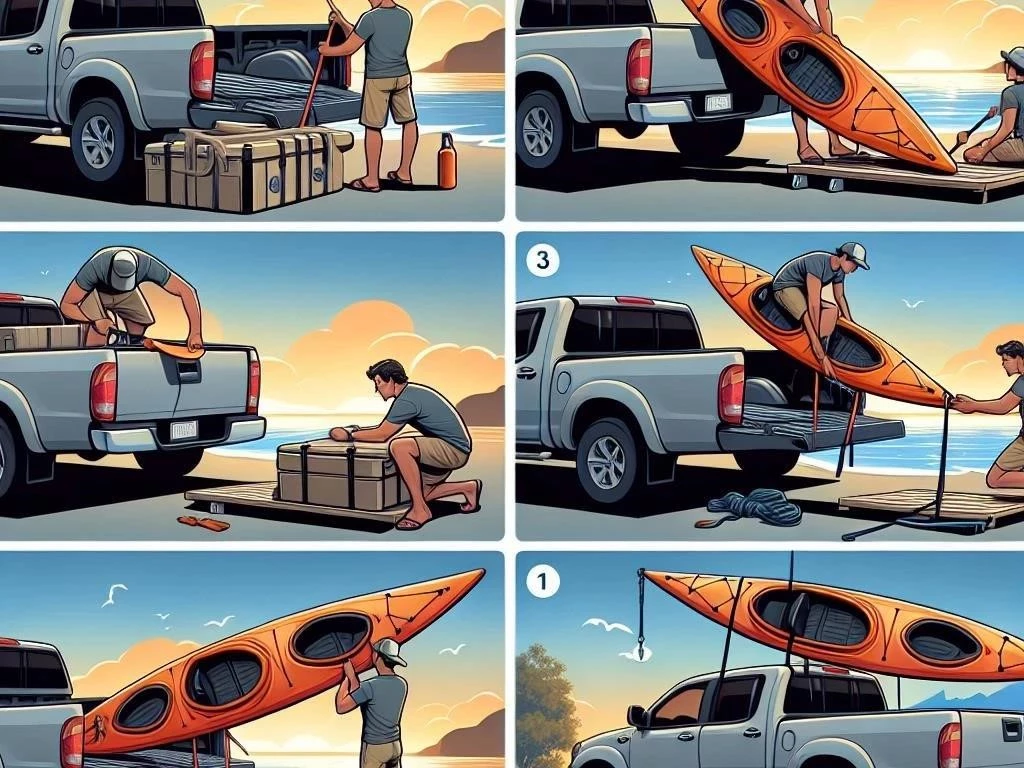
Choosing the Right Truck Bed for Your Kayak
Selecting the appropriate truck bed for kayak transportation is crucial for safe hauling. A truck bed should ideally be long enough to accommodate the kayak’s length while allowing for secure positioning. Consider the width and depth as well, ensuring that the kayak can be loaded without excessive overhang. Additionally, evaluate the material and condition of the truck bed, as durability plays a significant role in securing your outdoor gear. If necessary, invest in truck accessories that enhance the bed’s functionality, providing better support and stability during your adventures.

Kayak Rack Options for Truck Beds
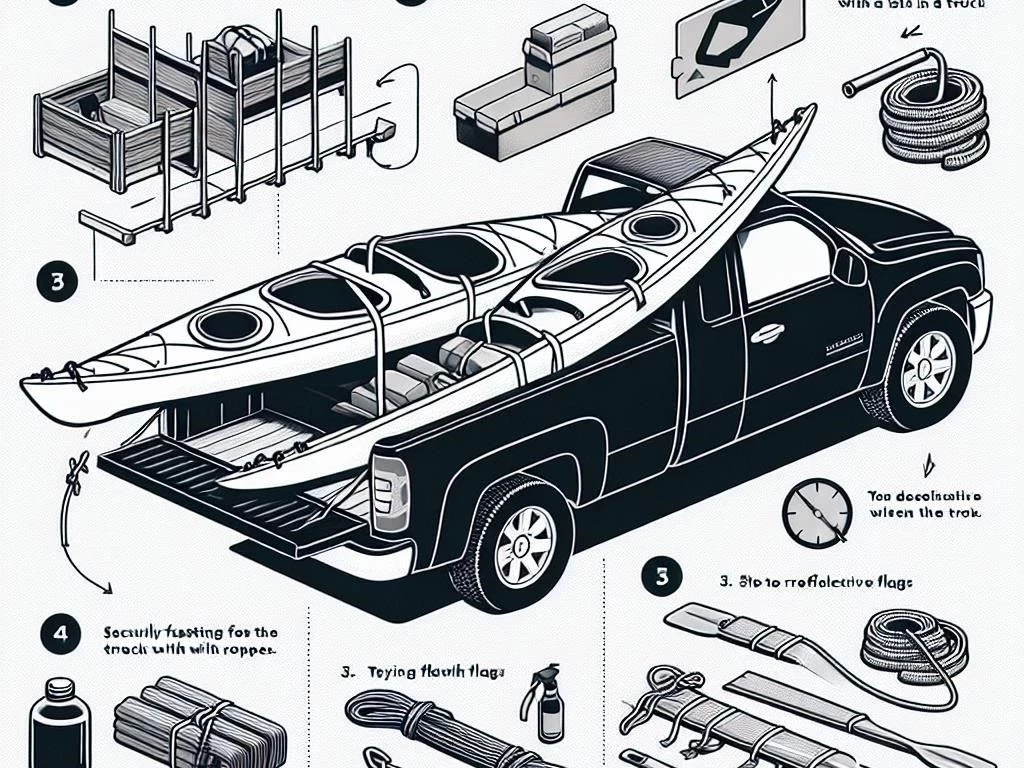
When transporting a kayak in a truck, utilizing a proper kayak rack is essential for safety and ease. Various kayak rack options are available for truck beds, including vertical and horizontal mounts, which can accommodate different kayak sizes. Some racks feature adjustable arms, allowing for easy customization based on the kayak’s length. Additionally, consider racks with built-in padding to protect your kayak from scratches and damage. Investing in a quality kayak rack not only enhances the stability of your load but also simplifies the loading and unloading process during your outdoor excursions.
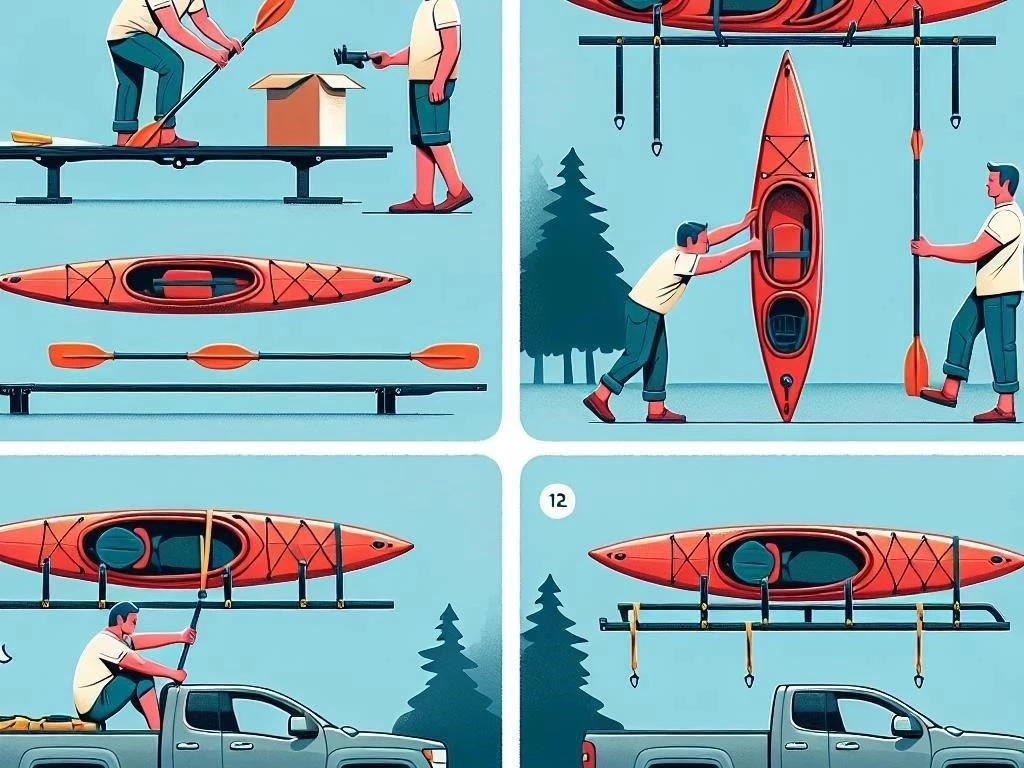
Essential Kayak Accessories for Secure Transport
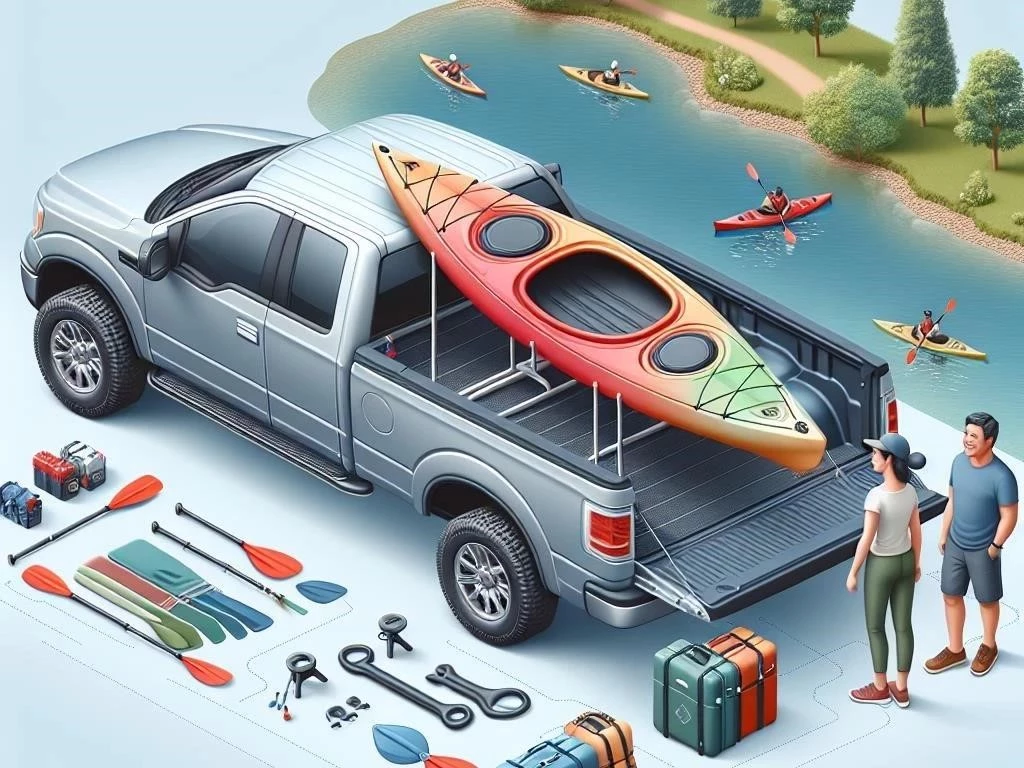
To ensure safe and secure transport of your kayak, several essential accessories are necessary. Tie-down straps are crucial for securing your kayak in the truck bed, preventing movement during transit. Additionally, using padding helps protect both your kayak and truck from potential damage. A kayak cart can facilitate easier loading and unloading, especially for longer distances. Consider investing in specialized kayak accessories designed for stability and convenience. These tools will enhance your overall vehicle setup, ensuring a smooth and hassle-free journey to your next water sports adventure or fishing trip.
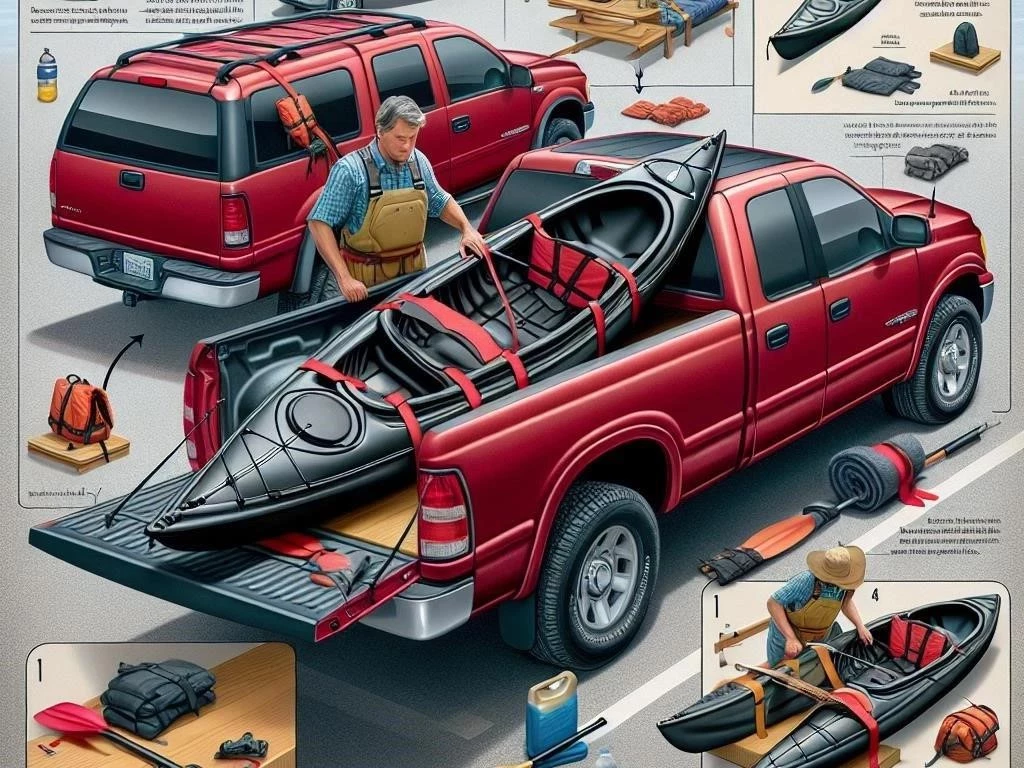
4.1 Tie-Down Straps: Importance and Usage
Tie-down straps are vital for securely transporting a kayak in a truck. These straps prevent the kayak from shifting or sliding during transit, ensuring safety on the road. When choosing tie-down straps, opt for durable materials that can withstand heavy loads and harsh weather conditions. Proper usage involves fastening the straps around the kayak and securely attaching them to the truck bed or rack. It’s essential to check the tightness before driving and periodically during the trip to avoid any potential mishaps. Using tie-down straps effectively enhances overall kayak transportation stability.
4.2 Padding: Protecting Your Kayak and Truck
Using padding is essential for safeguarding both your kayak and truck during transportation. Soft padding materials, such as foam or rubber, can be strategically placed between the kayak and truck bed to prevent scratches and dents. Additionally, padding helps absorb shocks from bumps on the road, reducing the risk of damage; Ensure that the padding is securely attached and covers vulnerable areas of the kayak. Investing in quality padding not only protects your equipment but also extends its lifespan, allowing you to enjoy your outdoor adventures with peace of mind and confidence.
Loading Techniques for Your Kayak
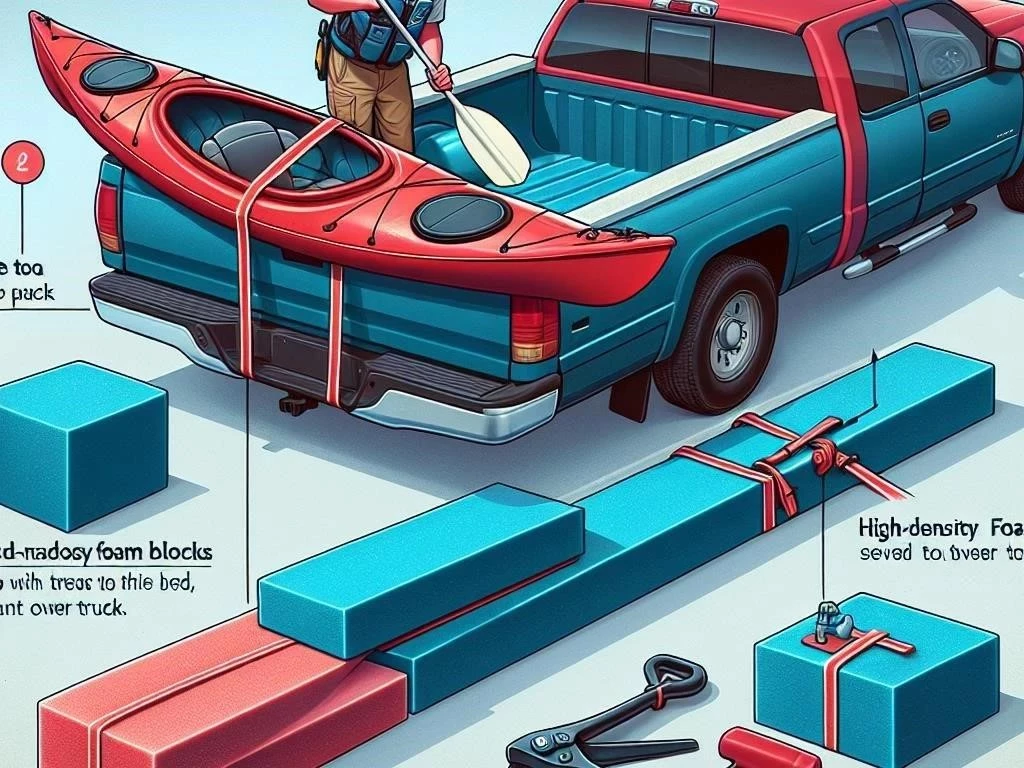
Proper loading techniques are crucial for safely transporting your kayak in a truck. Begin by positioning the kayak near the truck bed, ensuring it is stable and secure. If loading solo, lift the kayak from the center and slide it into the bed, maintaining balance. For team loading, communicate clearly and coordinate movements to avoid accidents. Always load the kayak with the hull facing up for better support and weight distribution. Once in place, adjust the position as necessary before securing it with tie-down straps to prevent movement while driving.

5.1 Solo Loading vs. Team Loading
When it comes to loading a kayak into a truck, solo loading and team loading each have unique advantages. Solo loading requires careful technique and balance; it’s essential to lift the kayak from the center and slide it into the truck bed smoothly. On the other hand, team loading allows for better coordination and safety, as two people can lift and position the kayak together. With team loading, communication is key to ensure a smooth process. Regardless of the method chosen, always prioritize safety and stability to prevent accidents during loading.
5.2 Proper Positioning in the Truck Bed
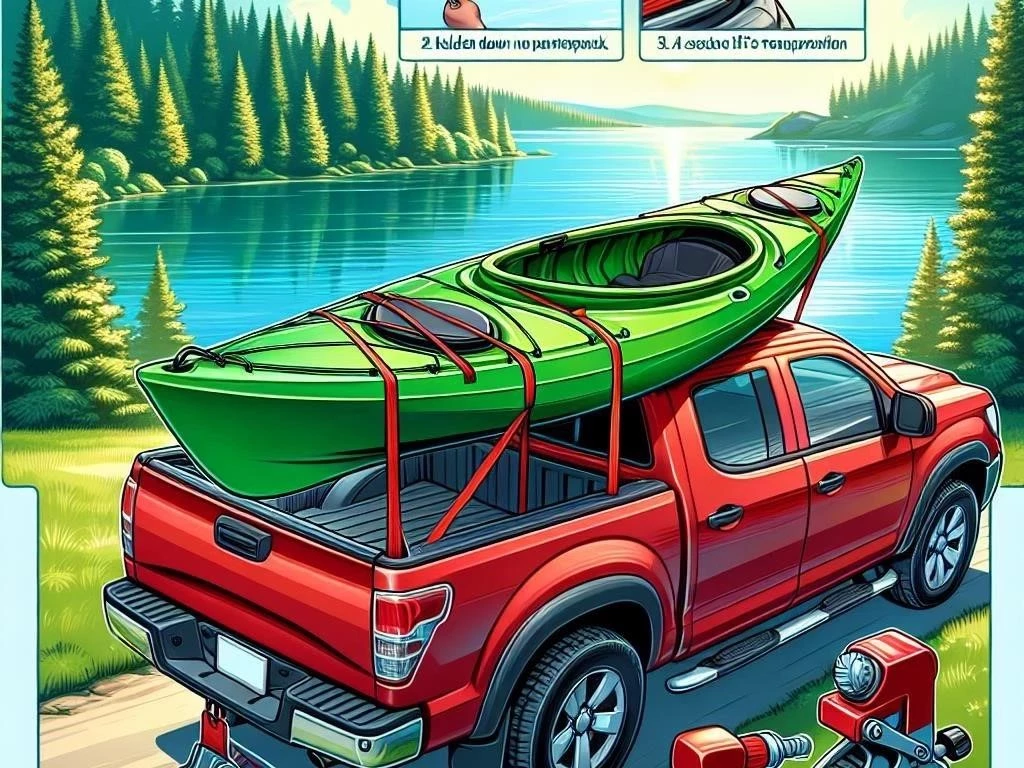
Proper positioning of your kayak in the truck bed is critical for safe transportation. Ensure that the kayak is centered in the bed, with equal weight distribution on both sides. The hull should face upward to maintain stability and prevent damage. If your kayak is longer than the truck bed, consider using a tailgate extender or allow for slight overhang, but secure it properly. Use padding to protect contact points and minimize movement. This careful positioning reduces the risk of accidents and ensures a smooth ride, allowing you to focus on your adventure.
Securing Your Kayak for Safe Transportation
Securing your kayak for safe transportation is essential to prevent damage and ensure road safety. Start by using high-quality tie-down straps to fasten the kayak firmly to the truck bed or rack. Ensure the straps are positioned over the strongest parts of the kayak for maximum stability. Adjust the tension of the straps to eliminate any slack, but avoid over-tightening, which can cause damage. Additionally, consider using secondary safety measures like rope or bungee cords for extra security. Regularly check the straps during your journey to maintain stability and prevent shifting.
6.1 Best Practices for Tie-Down Methods
Utilizing best practices for tie-down methods is crucial for safely transporting your kayak. Start by choosing durable, weather-resistant tie-down straps that can withstand outdoor conditions. Position the straps over the kayak’s hull, securing them to the truck bed or kayak rack. Ensure that the straps are tight enough to prevent movement but not so tight that they cause damage. Use cam buckle straps or ratchet straps for added security. Regularly check the tension of the straps during your trip to maintain stability, preventing any potential accidents or mishaps during transportation.
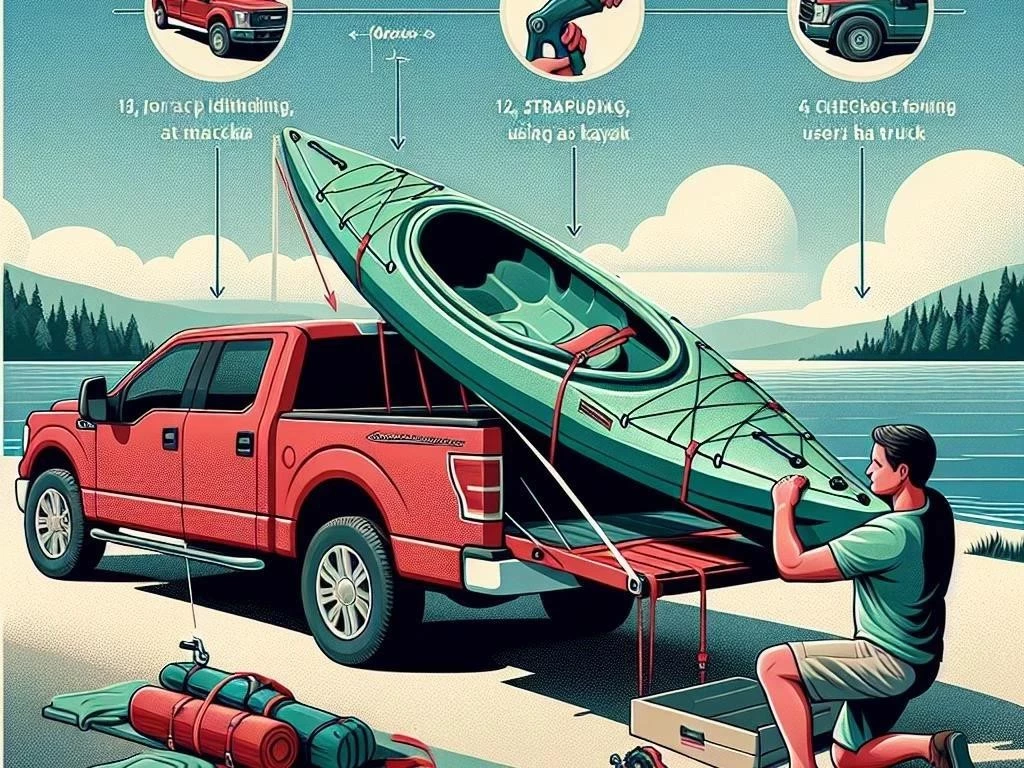
6.2 Checking Stability During Transport

Checking stability during transport is essential for ensuring the safety of your kayak and vehicle. Before starting your journey, visually inspect the kayak to confirm it’s securely tied down and properly positioned. It’s advisable to stop and check the stability after driving a short distance, as vibrations can loosen straps. While driving, listen for any unusual noises that may indicate movement. If possible, use mirrors to monitor the kayak’s position throughout the trip. Regular checks help prevent accidents and ensure your kayak remains secure, allowing you to focus on enjoying your adventure.
Kayak Safety During Transport
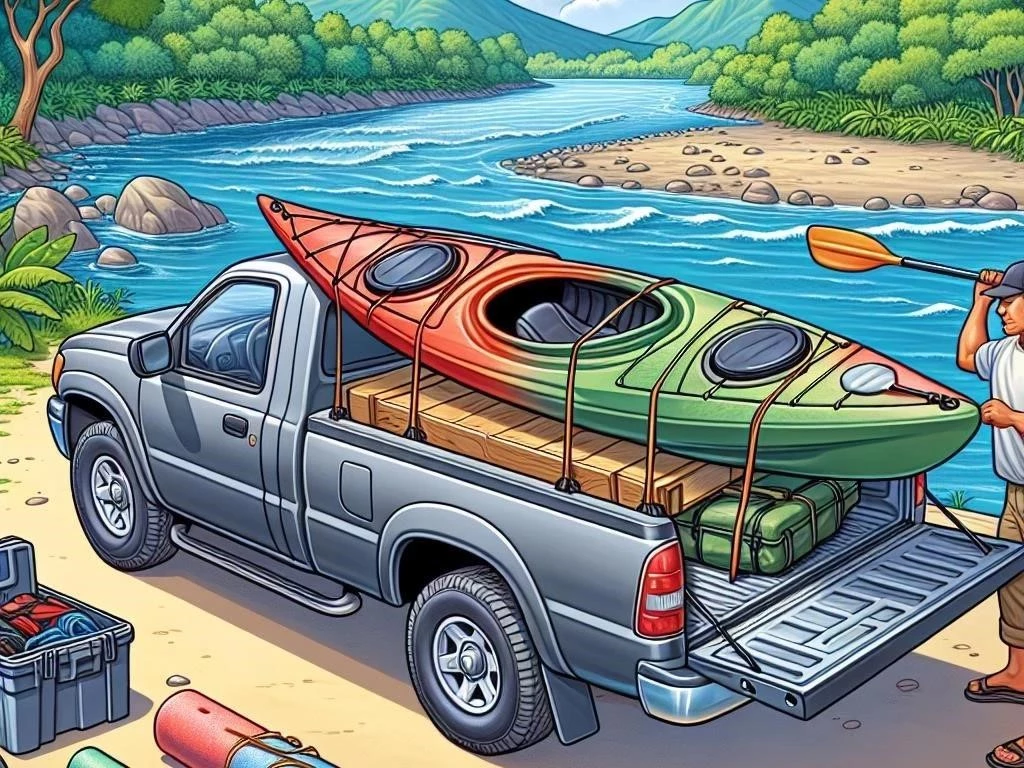
Ensuring kayak safety during transport is critical to prevent accidents and damage. Always use appropriate tie-down straps and padding to secure your kayak effectively in the truck bed. It’s essential to check local regulations regarding kayak transport, as some areas have specific requirements for visibility and safety. Additionally, ensure your vehicle setup allows for clear visibility of the kayak from behind, minimizing the risk of collisions. Regularly inspect your kayak for any signs of wear or damage before and after transport, helping to maintain its integrity for future outdoor adventures.
7.1 Ensuring Visibility on the Road
Ensuring visibility on the road while transporting a kayak is crucial for safety. If your kayak extends beyond the truck bed, it’s important to use a red flag or marker to signal its presence to other drivers. This not only complies with legal requirements but also enhances safety. Additionally, consider using reflective tape on the kayak to improve visibility, especially during low-light conditions. Regularly check your mirrors to monitor the kayak’s position, ensuring it remains stable. By prioritizing visibility, you help prevent accidents and ensure a safer journey for everyone on the road.
7.2 Regular Maintenance Checks Before a Trip

Conducting regular maintenance checks before transporting your kayak is essential for ensuring safety and performance. Inspect the kayak for any signs of damage, such as cracks or leaks, and repair them promptly. Check the integrity of all tie-down straps, ensuring they are free of wear and tear. Additionally, clean the kayak to prevent dirt buildup that can cause long-term damage. Verify that all accessories, such as paddles and life jackets, are in good condition and securely stored. These proactive measures not only enhance safety but also prolong the life of your outdoor gear.
Alternative Transport Methods for Kayaks

When transporting a kayak, several alternative methods exist beyond using a truck. Roof racks are a popular option, allowing kayaks to be secured on top of the vehicle, freeing up space in the truck bed. This method is ideal for smaller vehicles or when multiple kayaks need to be transported. Another option is a kayak cart, which facilitates easy movement over short distances, especially when launching. Additionally, some trailers are designed specifically for boat transport, offering enhanced stability and safety during long trips. Evaluating each method helps determine the best fit for your needs.
8.1 Roof Racks vs. Truck Bed Transport
When deciding between roof racks and truck bed transport for your kayak, consider several factors. Roof racks offer the advantage of freeing up space in the truck bed, allowing for additional gear or passengers. They are ideal for smaller vehicles or when transporting multiple kayaks. However, loading and unloading can be more challenging, often requiring additional equipment. On the other hand, truck bed transport provides ease of loading and stability during travel. The choice ultimately depends on your vehicle type, kayak size, and personal preferences, ensuring safe and efficient transport for your adventures.
8.2 Using a Kayak Cart for Short Distances
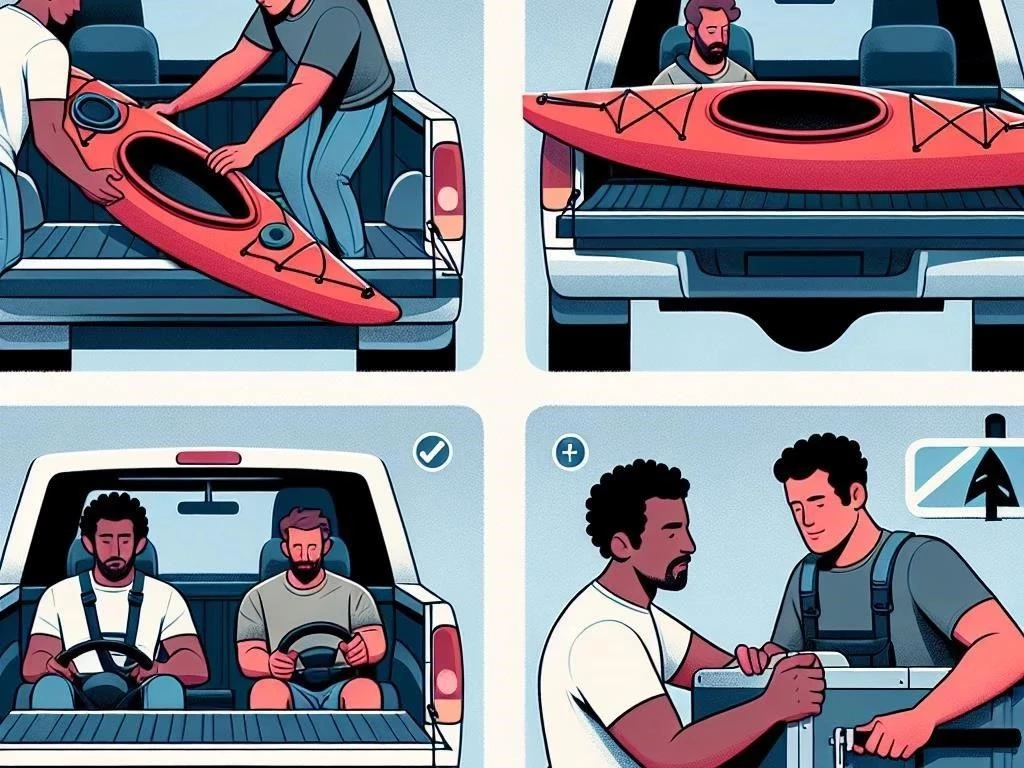
Using a kayak cart is an effective solution for transporting your kayak over short distances, especially when launching into the water. These carts are designed to support the kayak’s weight, making it easy to move from the truck to the launch site. When selecting a kayak cart, choose one that is sturdy, lightweight, and features wide wheels for better stability on uneven terrain. Ensure the kayak is securely attached to the cart to prevent accidents during transport. This convenient accessory enhances your outdoor experience, allowing you to focus on enjoying water sports and adventures.

Tips for Hauling Kayaks on Fishing Trips
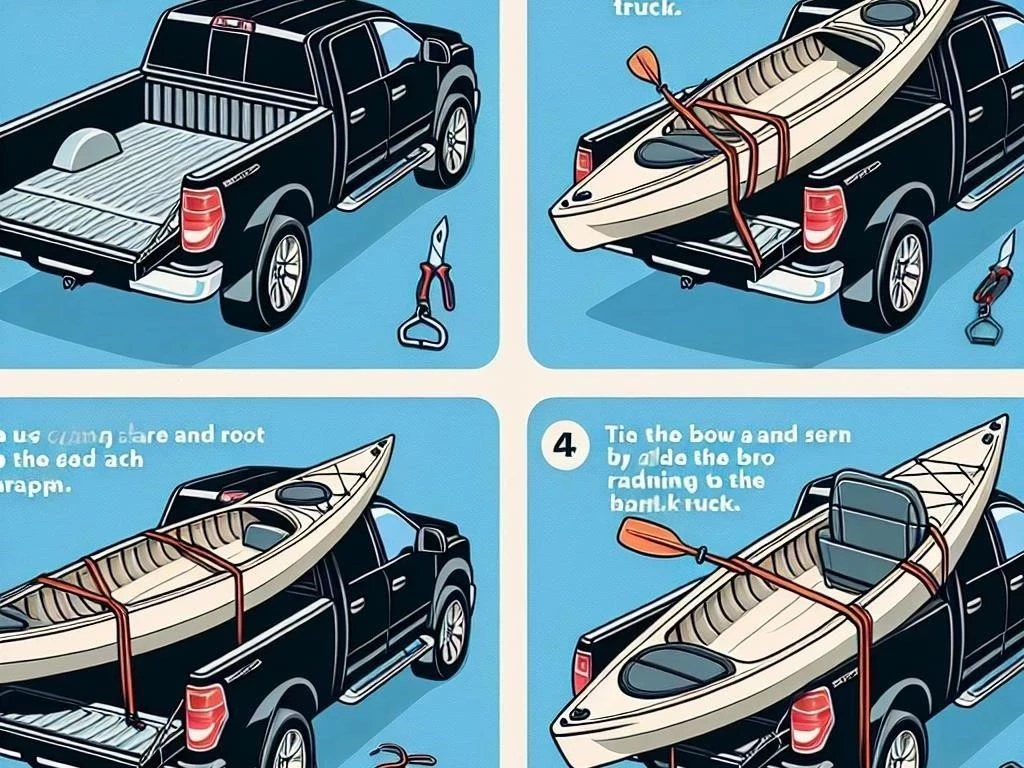
When hauling kayaks for fishing trips, preparation is essential to ensure a smooth experience. First, ensure all fishing gear is securely stored within the kayak or in the truck to avoid shifting during transport. Use proper tie-down techniques to secure the kayak firmly in the truck bed, preventing movement. Consider using padding to protect both the kayak and truck from damage. Additionally, plan your route ahead of time, choosing roads that accommodate larger vehicles. Lastly, conduct regular checks during the trip to maintain stability and ensure a successful fishing adventure awaits.
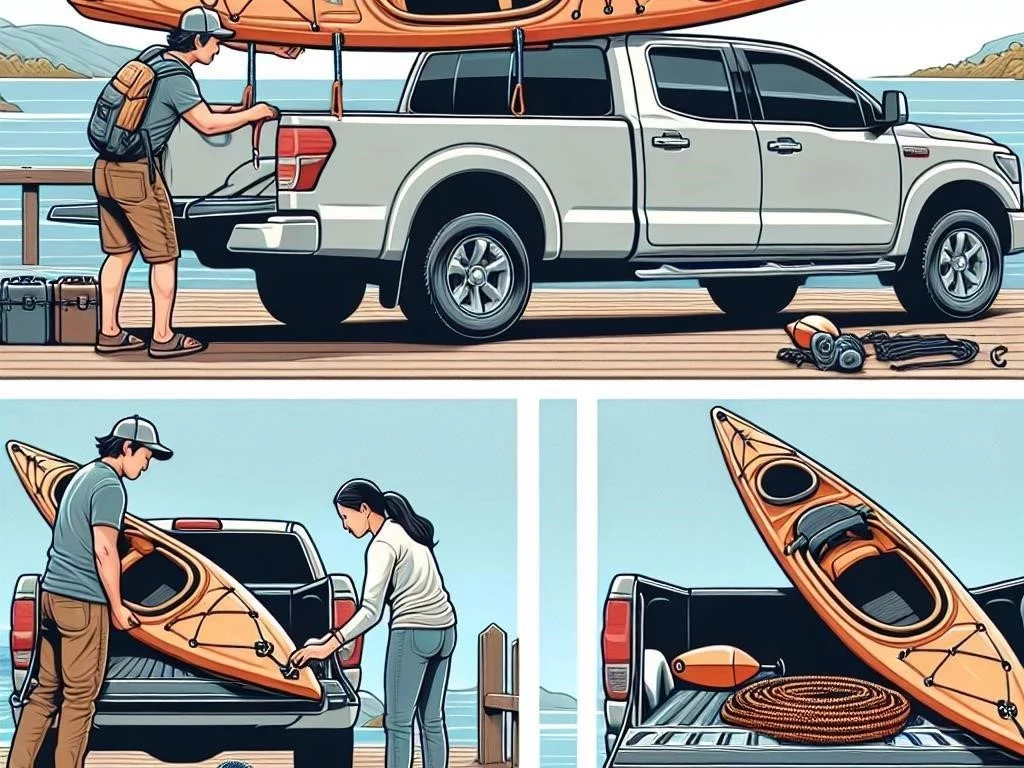
Preparing for a Camping Trip with Your Kayak

Preparing for a camping trip with your kayak involves careful planning to ensure a successful adventure. Start by organizing all necessary outdoor gear, including camping equipment and kayak accessories, for easy access. Ensure your kayak is clean and free of debris to maintain its condition. Use a truck bed or roof rack to transport the kayak securely, employing tie-down straps and padding for added protection. Pack essential items, such as life jackets and fishing gear, efficiently within the kayak. Lastly, check weather conditions and campsite regulations to guarantee a safe and enjoyable experience.
Adventure Gear and Kayak Storage Solutions
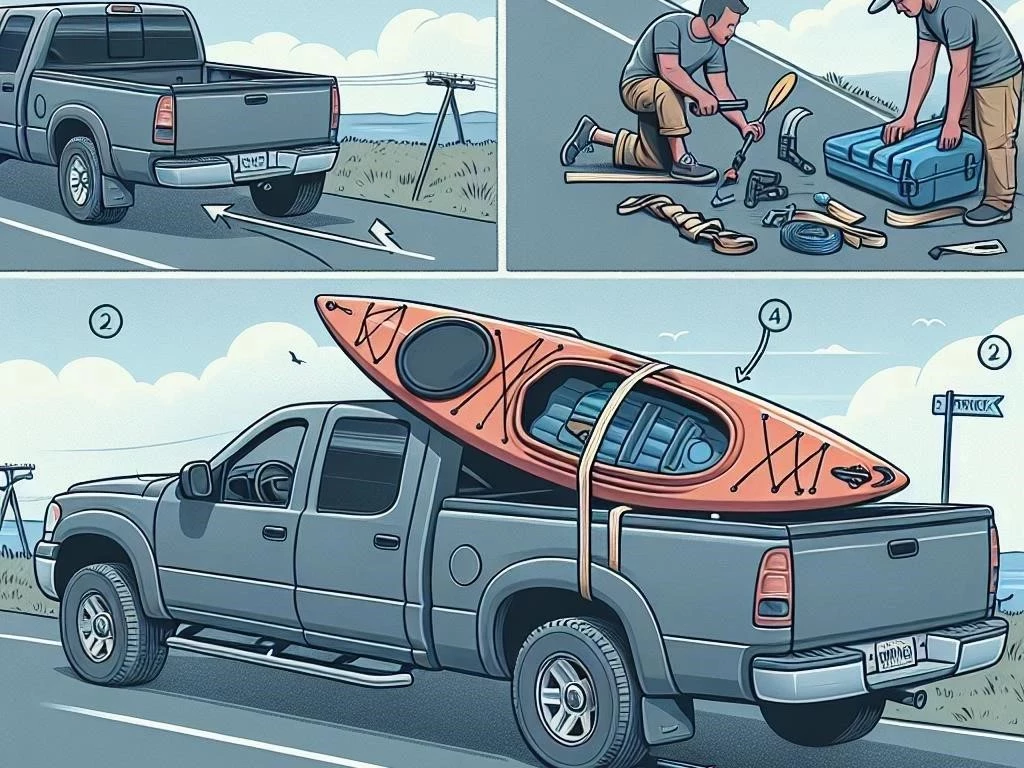
When transporting a kayak in a truck, effective storage solutions for adventure gear are essential. Use waterproof bags to store camping essentials, ensuring they remain dry during transport. Consider utilizing kayak storage racks or organizers within the truck bed to maximize space and keep gear accessible. Additionally, secure loose items with tie-down straps to prevent movement while driving. For long-term storage, invest in a kayak cart to facilitate easy movement and protect your kayak from damage. Organizing your adventure gear efficiently enhances your overall experience, allowing for quick access to everything needed for outdoor activities.
Transporting a kayak in a truck can be hassle-free with the right preparation and techniques. By choosing appropriate storage options, utilizing secure tie-down methods, and ensuring your kayak is in good condition, you can enhance safety and stability on the road. Regular maintenance checks and proper loading techniques minimize risks during transport. Consider alternative methods like roof racks or kayak carts for convenience. Ultimately, thorough planning and organization will make your road trip enjoyable, allowing you to focus on the adventure ahead while ensuring your kayak arrives safely at your destination.
